
The Legend of Nayuta: Boundless Trails Review
The Legend of Nayuta: Boundless Trails is not a Trails game. I know the diehard Falcom fanbase is already well aware of this and has been for a while, considering the game is actually more than a decade old. But ahead of its first official English-language release, I've also seen plenty of confusion among RPG Site's general readership about what this game is and where it fits into the Trails timeline (it doesn't).
So, what is The Legend of Nayuta? Originally released in Japan for PSP in 2012, as Nayuta no Kiseki, this game is not much like a Trails game at all, frankly. It is much, much more similar to some of Falcom's other properties, namely the Zwei! action RPGs, with a touch of Gurumin and a hint of classic Ys for good measure. Even Zwei's eat-food-for-EXP system makes a return in Nayuta, although it's not the only way to earn EXP this time around.
So if The Legend of Nayuta caught your attention because of the nominal and aesthetic similarity to the Trails series, but you aren't already familiar with Zwei or Gurumin, I suppose Falcom's confusing naming worked as intended in this case. To be clear, I appreciate NIS America's take on the English title given the circumstances, as well as the effort to bring this RPG to the West many years after its original Japanese release.
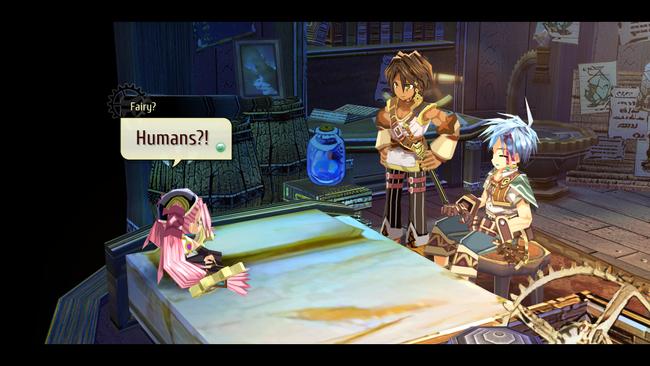
The Legend of Nayuta takes place on Remnant Isle, a place where strange Star Fragments and other mysterious relics regularly fall from the sky. These fragments act as windows to a magical Other World that the titular teenage Nayuta dreams of finding one day. On such a fateful day, a massive ruin falls from the sky like a meteor to the shores of Remnant Isle, and inside that ruin houses a foot-tall pink-haired fairy named Noi. And thus with this fateful encounter, the Legend of Nayuta begins to take shape.
Much like Zwei or Gurumin, The Legend of Nayuta is a stage-based affair, combining a light action RPG with some arcadey platforming and puzzle elements. There's some block-pushing, platforming-jumping, switch turning, just enough to keep some variety as you take down foes in these roughly five-to-ten minute stages. You access these stages from nodes on a world map, in a style not too dissimilar from several Mario platformers. Also much like Zwei, The Legend of Nayuta is easy to get the hang of in a matter of moments.
You take control of Nayuta as he moves through these stages, taking on enemies with some simple sword-swinging attack combos and dodge maneuvers. The fairy Noi tags alongside, wielding a variety of magic spells that can be used to attack foes from range. These include magic fireballs, shuriken, shockwaves, icicles, and the like. So Nayuta attacks at close range, while Noi attacks from afar.
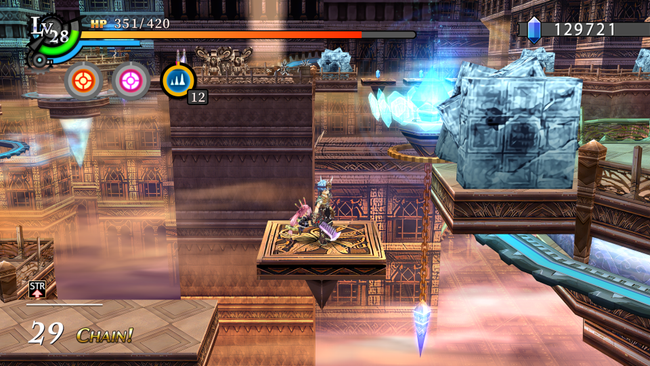
In addition to the basic objective of simply making it to the end of each stage, each also houses a handful of additional secrets to find. These come in the form of three bonus crystals tucked away, usually along side paths hidden in the level. There's also an optional treasure chest or two to find in each stage, which may hold equipment, money, food items, etc. Each stage also has a bonus objective to undertake, which can range from damaging foes in certain ways, beating a stage within a time limit, avoiding taking damage yourself, or other optional tasks of that nature.
After each stage, you are given an arcade-style grade based on your completion of the level, including if you found the three secret crystals, if you found the hidden treasure, and if you completed the stage's Bonus Mission. These reward you with star-shaped stamps, which you can turn in for a variety of upgrades to Nayuta's arsenal. These include expanded attack combos, enhanced dodge capability, and even a few special abilities.
Nayuta has a very satisfying reward loop overall, as any good RPG should. You always feel like you are getting stronger, expanding your moveset, and gaining better combat & exploration capability as you proceed through Nayuta's main story. No stage lingers too long, no puzzle is overly obtuse, and any challenge stays quite manageable the whole way through. In what is effectively a follow-up from Zwei II, Nayuta is easily the most robust Falcom game of this style.
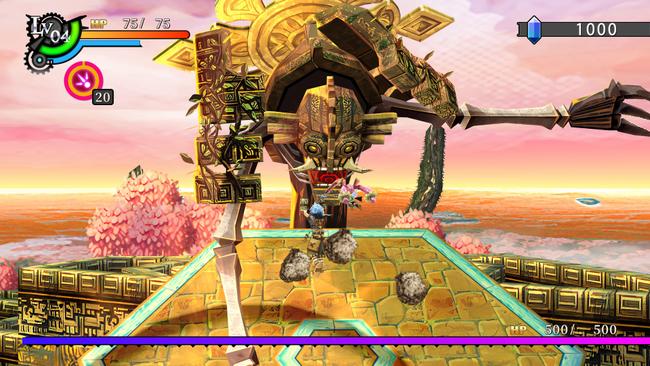
In between stages, you can explore the small Remnant Isle and chat with NPCs to take on a handful of sidequests. There are about 25 in total, which often reward Nayuta with money, items, collectibles, or sometimes some new combat abilities. Sometimes these sidequests involve simply talking to the right NPCs in the right order, or some simple item-finding around the island, but a handful will require you to revisit certain stages to seek out a certain place or fight an optional encounter.
In addition to sidequests, NPC dialogue changes frequently as well, usually in between chapters, and it's this component that's actually most similar to what you might expect in a Trails game. Make sure you speak with the townspeople regularly if you want to hear everything they have to say.
The Legend of Nayuta is not a long RPG. You can complete an initial playthrough, post-game included, in 20 hours or less. It is worth noting that a New Game + mode does add both new side events and new level variations, so completionists may want to play through the game at least twice.
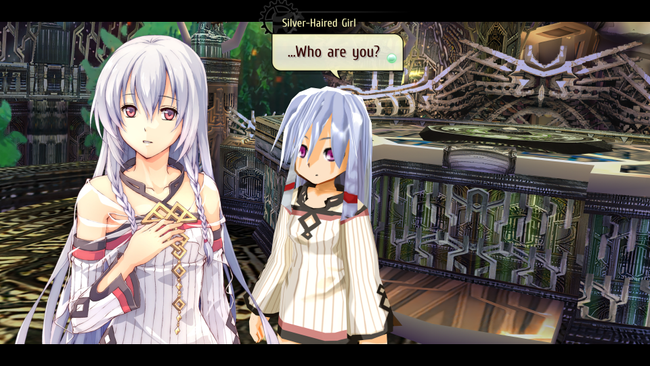
Being a PSP game at heart, Nayuta embodies a charming and stylized aesthetic of slightly deformed character models, which admittedly can be amusing when paired with the highly detailed character portrait art. I like it, though. The presentation is quite colorful, and the musical score is a perfect accompaniment.
Probably the most disappointing component of The Legend of Nayuta is its overall narrative, which is somewhat unoriginal and predictable. Now the game is not especially narrative-focused to begin with, at least not to the same extent as the actual Trails series, so there's not as much emphasis placed on character writing, world-building, or things of that nature. The story here follows a very formulaic structure, although it slots nicely into a video game architecture. The villain and his ultimate motivation are also things you've seen before, and they fail to compel on their own.
Even so, Boundless Trails is a delightful game that doesn't overstay its welcome. Combat mechanics are actually quite decent all things considered, and the level design is some of Falcom's best in this style. Boss encounters are also, for the most part, well-designed and varied. Really, Nayuta is just a competent game all around.
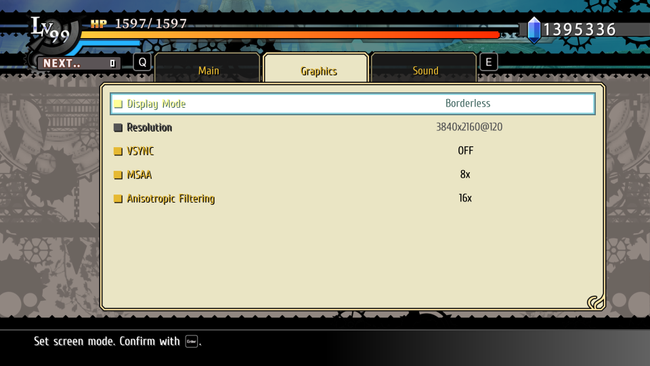
As far as the PC port goes, much like many recent Falcom titles, it was handled by Peter 'Durante' Thoman and his company PH3 games. And like several of PH3's ports, Nayuta's is very solid, although it doesn't have the wealth of configuration options that you would see in the company's Ys ports, for example. Even so, modern PCs should have no problem maxing out the game, and more modest builds should have little issue as well. Oddly enough, the PC port has already been available for more than a year now on Steam, just only in Japanese until NIS America patches in the English localization. And although I haven't played it this way myself, I am also told that the PC version plays very well on Steam Deck.
The Legend of Nayuta: Boundless Trails invokes a feeling of an earlier era of Falcom in some of the best ways. With a charming presentation and commendable gameplay, this is a satisfying game and an easy recommendation to anyone looking for a light-hearted action RPG romp.